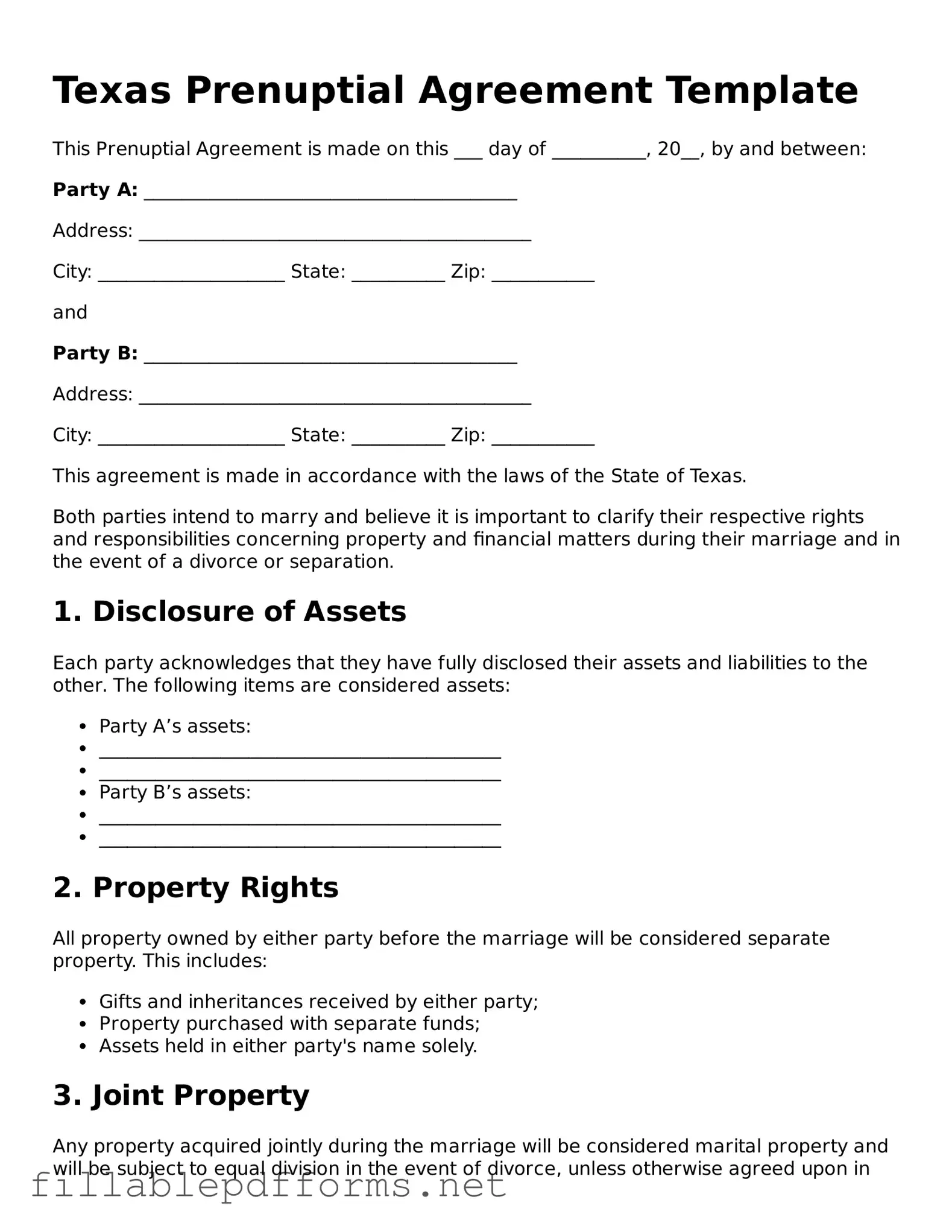Attorney-Verified Prenuptial Agreement Form for Texas State
A Texas Prenuptial Agreement form is a legal document designed to outline the financial and property rights of each spouse before marriage. This agreement can help protect individual assets and clarify financial responsibilities, ensuring both parties understand their rights. By establishing clear terms, couples can foster open communication and reduce potential conflicts in the future.
Launch Editor Here
